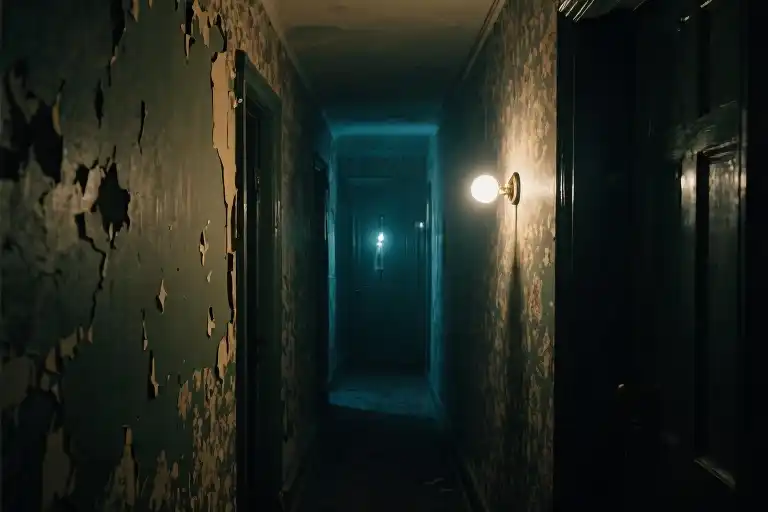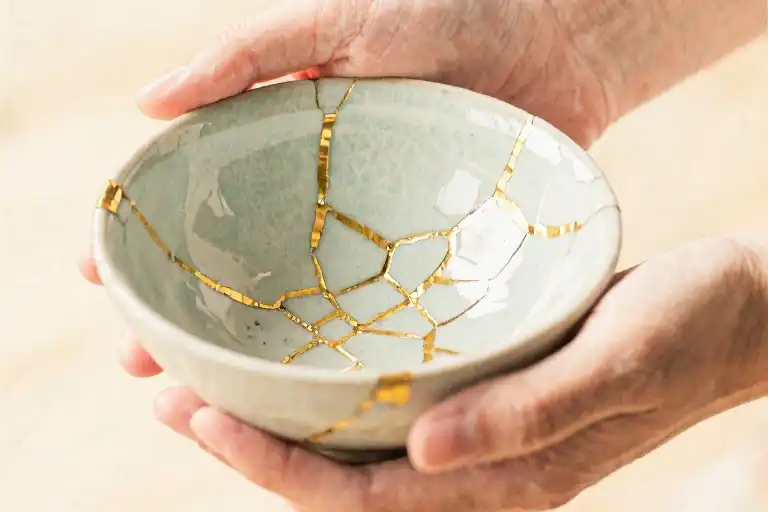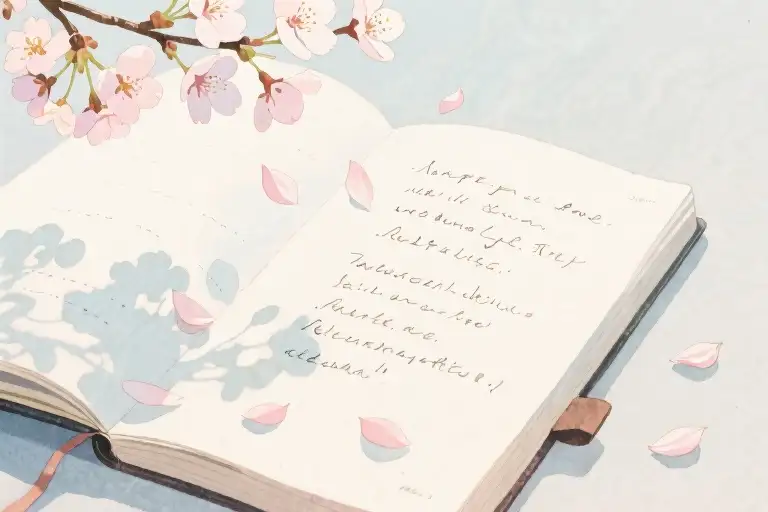“Good men are either married, damaged, or extinct.” The words hung in the air like a verdict, spoken by a 40-year-old divorced mother of two over lukewarm coffee. Her fingers traced the rim of the mug absentmindedly, the same way her thoughts kept circling back to that gnawing loneliness. Here was a woman who’d built a career, raised children, maintained friendships – yet the simple act of finding someone to share a bed with felt like searching for a unicorn.
She wasn’t talking about fireworks or fairy tales. What kept her awake at night was the mundane magic of consistency – a warm body beside hers that wouldn’t vanish by morning, someone to split the silence with. The divorce papers had dried years ago, but the regret still seeped through sometimes, especially when helping her teenage son with math problems his father should’ve been explaining.
Modern dating apps sprawled across her phone screen like a digital graveyard of possibilities, each swipe left reinforcing her theory about the scarcity of decent men. Yet outside her apartment window, the world teemed with living, breathing males – coworkers grabbing lunch, fathers pushing strollers, gray-haired men walking dogs. None fit the mysterious criteria of ‘available and acceptable.’
This paradox isn’t unique to her. Coffee shops and group chats echo with variations of the same lament. But what if we’ve been asking the wrong question? Instead of “Where have all the good men gone?” perhaps we should wonder: “What made them retreat?” The answer lies not in biology or some mass male vanishing act, but in the cultural air we’ve all been breathing – one that alternately tells men they’re obsolete then scolds them for not showing up differently.
That dating app on her phone? It’s just the visible tip of an iceberg we’ve been sailing toward for decades. The real story isn’t about missing men, but about how modern relationships became a minefield where everyone’s walking on eggshells, armed with checklists and exit strategies. Her loneliness matters. His silence matters more than we’ve acknowledged. And between them stretches a chasm we keep widening with every unexamined assumption about who should be what for whom.
When ‘Good Men’ Become an Endangered Species
The complaint echoes through coffee shops and therapy sessions alike: “Where have all the good men gone?” A recent Pew Research study confirms what many divorced women intuitively feel—only 37% of women over 40 remarry within a decade after divorce. The numbers paint a stark picture, but they don’t tell the whole story.
Dig deeper into those statistics, and you’ll find an uncomfortable truth. The male population hasn’t actually decreased—they’ve simply become harder to spot. Like urban wildlife adapting to human encroachment, modern men have learned to navigate a landscape where traditional masculinity is simultaneously mocked and demanded.
“We’re still here,” says Mark, a 42-year-old divorced accountant who requested anonymity. “But after being told we’re either toxic or disposable, most guys I know stopped waving flags about being ‘good men.’ What’s the point when you’ll get labeled as ‘nice guy’ with air quotes anyway?” His voice carries the weary humor of someone who’s learned to armor himself with irony.
This quiet retreat creates a perceptual paradox. Women see fewer marriageable men, while men feel increasingly invisible as relationship material. Dating apps exacerbate the divide—algorithms prioritize photogenic extroverts, leaving thoughtful introverts buried in digital oblivion. The result? Both sides conclude the other has vanished.
Economic realities further distort the picture. With stagnant wages and skyrocketing housing costs, many men who’d make perfectly decent partners don’t meet the unspoken financial thresholds. A 2023 Brookings Institution study found that men without college degrees—once the backbone of stable working-class marriages—now face a 58% decline in real earnings compared to their 1970s counterparts.
Yet the most overlooked factor might be temporal. The “good men” these women seek—reliable, emotionally available, financially stable—often emerge through years of partnership. They’re not found fully formed, but cultivated through shared experiences. By writing off men who don’t instantly check every box, we might be discarding diamonds in the rough.
The scarcity isn’t absolute, but circumstantial. Good men haven’t gone extinct—they’ve just learned to camouflage in a world that rarely rewards their virtues. Spotting them requires adjusting our search methods: looking beyond first impressions, questioning inherited checklists, and perhaps most crucially, creating spaces where decent men feel safe to emerge from hiding.
Who ‘Killed’ the Traditional Good Man?
The lament echoes through dating apps and coffee shop conversations: Where have all the good men gone? But the truth is far more layered than a simple disappearance. Modern men haven’t vanished—they’ve retreated, reshaped by cultural currents that first dismissed them, then demanded their return on outdated terms.
The Cultural Whiplash
For decades, pop culture and academic discourse chipped away at traditional masculinity, often conflating toxic traits with male identity itself. Phrases like man up became punchlines, while emotional vulnerability—once stigmatized—was suddenly expected without roadmaps. Men heard two conflicting messages: You’re problematic and Why won’t you open up? Small wonder many chose silence.
The data paints a stark picture: A Pew Research study found 55% of single men under 30 believe society unfairly blames them for structural problems. Meanwhile, male suicide rates—3.5 times higher than women’s—hint at the cost of this dissonance.
The Economics of Opting Out
Marriage, once an economic partnership, now feels like a liability. Between skyrocketing housing costs (median home prices have doubled since 2000) and the breadwinner stigma lingering despite dual-income norms, men face a financial tightrope. Why commit when stability seems unattainable?
One 40-year-old accountant put it bluntly: I’d love a family, but my salary barely covers a studio apartment. What woman wants that? His fear isn’t unique—72% of single men in a Knight Frank survey cited finances as their top barrier to marriage.
The Silent Adaptation
Here’s what the 40-year-old divorcée missed: The good men she seeks didn’t go extinct. They’re right there—working remotely, hiking solo, or quietly leaving dating apps after being called low-effort for texting Hey instead of crafting novel-length openers. They’ve adapted to a world that told them they were obsolete, only to be blamed for adapting too well.
As sociologist Michael Kimmel notes: When society dismantles the old playbook but offers no new rules, disengagement isn’t rebellion—it’s survival. The real question isn’t Where are the good men? but How did we make invisibility the rational choice?
The Phantom Checklist: Are We Chasing Impossible Standards?
The divorce papers had barely dried when Sarah started compiling her mental checklist for the next partner. Must be emotionally available but not needy. Financially stable but not workaholic. Assertive yet always accommodating. Three years and countless coffee dates later, that perfect candidate remained frustratingly elusive – just like the mythical creatures her daughter colored in bedtime storybooks.
We rarely admit how many contradictory requirements we stack onto that imaginary ‘ideal partner.’ One foot firmly planted in 1950s provider fantasies (he should fix my car and pay for dinners), the other waving progressive flags (but must respect my independence and do 50% of emotional labor). The cognitive dissonance would be amusing if it weren’t so painfully common among dating apps’ ‘must have’ filters.
Relationship therapists observe an emerging pattern they call the trauma tax – where past hurts inflate future demands. That ex-husband’s emotional withdrawal? Now every new date gets interrogated about childhood attachment styles. The last boyfriend who forgot anniversaries? Current prospects must demonstrate elaborate romantic planning skills upfront. What begins as self-protection morphs into an obstacle course few humans could complete.
Dr. Elaine Foster’s clinical notes reveal this paradox: Divorced women in their 40s often seek partners exhibiting both the security of traditional masculinity and the vulnerability of modern emotional intelligence – qualities our culture still trains men to see as mutually exclusive. Her therapy groups use a revealing exercise where clients separate deal-breakers into needs (kindness, integrity) versus wishlist items (height, hobbies). Most discover they’ve been treating preferences as non-negotiables.
The digital age exacerbates this perfection hunt. Endless swiping creates the illusion of infinite options, making us quick to dismiss ‘almost-right’ matches. Social media showcases curated relationship highlights, warping expectations of constant romantic intensity. And that college friend who ‘finally found her soulmate at 45’? Rarely do we hear about their three-year adjustment period learning to coexist with someone else’s toothpaste tube habits.
Perhaps the most insidious phantom is the comparison ex – not the actual former spouse, but an airbrushed memory against which new partners unconsciously get measured. Time has a way of sanding down past relationships’ rough edges, leaving divorced daters holding a yardstick no living person could match. As one recently remarried client confessed: I realized I wasn’t looking for a real man, but for the ghost of my marriage’s best moments.
Breaking this cycle starts with distinguishing deal-makers from deal-breakers. Try rewriting your criteria with two columns: What would make me feel valued versus What would impress my friends. Notice how societal whispers shape personal desires. That guy who checks every box but leaves you cold? Maybe the boxes need rearranging.
Because here’s the uncomfortable truth hiding beneath our lengthy checklists: We don’t fear settling – we fear being settled for. And so we keep raising the bar, not realizing we’re the ones stranded on the other side.
Finding ‘Good Enough’ in Modern Dating
That lingering frustration so many single women feel – scrolling through dating apps, attending social events alone, wondering where all the decent men have gone – isn’t just imagination. The numbers confirm it’s harder now. Pew Research shows only 17% of divorced women remarry within five years today, compared to 32% in 1980. But here’s what the data doesn’t show: men didn’t vanish. They’re still here, just operating differently in a world that’s redefined what being a ‘good man’ means three times over since their grandfathers’ era.
The secret isn’t finding some mythical perfect partner. It’s recognizing that what made a good partner in 1995 (stable job, doesn’t drink too much) differs wildly from 2025’s reality (emotionally available, comfortable with your independence). Here’s how to navigate that shift:
Step 1: The Core Needs Filter
Start by separating dealbreakers from preferences. That list of 27 ‘must-haves’? Try this instead:
- Circle three non-negotiable values (e.g., kindness, financial responsibility)
- Underline five nice-to-haves (e.g., loves travel, good cook)
- Cross out one outdated standard (maybe ‘must earn more than me’)
One recently remarried client realized her ‘no bald men’ rule had screened out three genuinely compatible matches. The man she’s now dating? ‘Turns out I love how he runs fingers over his head when thinking.’
Step 2: Meet People Where They Actually Are
Forget bars and apps for a moment. The men who’ve adapted best to modern dating often avoid those spaces entirely. Try:
- Volunteering at animal shelters (shows nurturing side)
- Community education classes (indicates curiosity)
- Running clubs (demonstrates commitment)
A book club member shared: ‘I met Jeff when he quoted my favorite novel during a park cleanup. Turns out quiet guys express love through actions, not dating profile poems.’
Step 3: The 90-Day Observation Rule
Initial chemistry fades; consistent character doesn’t. Try this timeline:
- Weeks 1-3: Note how he treats servers, talks about exes
- Weeks 4-6: Watch how he handles stress (traffic, work problems)
- Weeks 7-12: See if small considerate behaviors accumulate
As one woman discovered: ‘His first-date awkwardness hid incredible emotional intelligence. Three months in, he noticed my tells before I voiced needs.’
This isn’t about settling. It’s about recognizing that ‘good’ looks different now – less about performing traditional roles, more about showing up authentically. The men worth finding might not check every box, but they’ll surprise you with quiet strengths our mothers wouldn’t have valued. Maybe that’s progress.
The Core Needs Filter: A Practical Approach to Modern Dating
The search for a partner often feels like navigating a maze with shifting walls. We carry lists of desired qualities – some scribbled consciously, others etched subconsciously by past experiences and societal whispers. For the divorced woman reentering the dating scene, these lists often become both compass and cage, directing her toward potential matches while simultaneously narrowing the field to near impossibility.
Here’s the uncomfortable truth most dating advice won’t tell you: your perfect partner doesn’t exist. But a genuinely good match might be standing right in front of you, obscured by your mental checklist. The core needs filter isn’t about settling – it’s about distinguishing between what actually builds connection and what we’ve been conditioned to believe matters.
Start with this radical exercise: take your current mental checklist and divide it into three categories. First, survival needs – the absolute non-negotiables like basic respect, emotional availability, and shared values about commitment. These form the foundation. Next, quality-of-life enhancers – traits that significantly improve daily compatibility, such as similar communication styles or overlapping hobbies. Finally, the fantasy toppings – those culturally programmed desires (six-figure salary, model looks) that have little to do with actual relationship satisfaction.
The divorced mother of two might initially prioritize financial stability above all, until she examines why. Is it truly about money, or the security and respect she associates with it? Often, we chase proxies for deeper needs. Emotional stability frequently proves more foundational to lasting happiness than income brackets. A man who listens attentively may do more for your sense of being valued than one who buys expensive gifts but checks his phone during your conversations.
This filtering system requires brutal honesty about your own patterns. Many divorced women unconsciously seek partners who replicate their ex’s positive traits while avoiding their flaws, creating impossible hybrids. Others swing to extremes, swearing off any quality remotely resembling their former spouse. Neither approach serves you. Better to ask: what three core needs went unmet in my marriage? Let those guide your new standards, not reactionary impulses.
Practical application looks like this: When reviewing dating profiles or considering second dates, run a quick triage. Does this person meet at least two of your three core needs? Do they show potential on the third? Are your hesitations about actual red flags or about them not matching some idealized image? The divorced executive might dismiss a warm, attentive high school teacher as ‘not ambitious enough’ before realizing her true need isn’t corporate drive but someone content in his own skin.
This method accomplishes something profound – it shifts your focus from evaluating potential partners to understanding yourself. The clearer you become about what actually sustains you in relationships (not what looks impressive on paper), the more clearly you’ll recognize viable matches. And you might just discover those ‘extinct’ good men were there all along, waiting beyond the glare of your outdated expectations.
Expanding Your Social Circles Beyond Dating Apps
That moment when you realize every conversation on dating apps starts with ‘Hey’ and ends in ghosting. It’s enough to make anyone swear off modern romance altogether. But what if the problem isn’t the lack of good men – it’s where we’re looking for them?
Most divorced women in their 40s default to dating apps because they’re convenient. Swipe right if he looks responsible, left if that shirt is questionable. Yet we forget that real connection rarely sparks through pixelated profiles and canned pickup lines. The men worth meeting aren’t always the ones performing their best selfies – they’re living actual lives beyond their phone screens.
Consider hiking clubs. Not the intense mountaineering types where everyone compares gear, but casual weekend groups where people walk and talk. There’s something about moving forward together – literally – that loosens tongues and lowers defenses. You’ll see how a man handles minor adversity (wrong turn, sudden rain) and whether he offers to share his trail mix. These unscripted moments reveal more than any carefully crafted dating profile ever could.
Volunteer organizations offer similar advantages. Sorting donations at the food bank or walking shelter dogs creates natural teamwork without romantic pressure. You’ll witness his patience with struggling volunteers, his consistency showing up week after week, his willingness to do unglamorous tasks – all qualities that matter far more than his job title or height. One recently divorced mother met her current partner while building houses with Habitat for Humanity. ‘We were covered in paint, arguing about window placements,’ she laughs. ‘Not exactly candlelit romance, but I saw how he problem-solved and listened.’
Book clubs might seem cliché, but they’re underrated social laboratories. The discussion topics provide built-in conversation starters beyond ‘So…do you come here often?’ Watch how men engage with ideas – do they dominate discussions or encourage quieter members? Can they disagree without becoming disagreeable? One member confessed she knew her now-husband was special when he brought homemade cookies to their Pride and Prejudice meeting ‘because Austen deserves proper sustenance.’
The key is participating consistently without scanning every room for husband material. Go because you enjoy the activity itself. The pressure-free environment allows organic connections to develop – or not. Either way, you’ve expanded your world beyond the soul-crushing cycle of app dating. As one woman in a community theater group put it: ‘At least if I don’t meet anyone, I’m having fun singing show tunes instead of staring at another ‘Hey beautiful’ message.’
These spaces work because they reverse traditional dating dynamics. Instead of interrogating each other over cocktails, you’re collaborating toward shared goals. The men there aren’t pre-selected algorithms promising compatibility – they’re three-dimensional humans with quirks and passions you’d never discover through filtered photos. Some might become friends. Others could introduce you to their single cousin. A few may surprise you by being exactly what you didn’t know you needed.
It requires stepping outside comfort zones, showing up sweaty and makeup-free sometimes, making small talk that might go nowhere. But isn’t that preferable to another evening of decoding texts from someone who may or may not resemble their profile picture? At worst, you gain new skills and friendships. At best, you might just bump into someone wonderful while doing something you love – the way people did for centuries before apps convinced us love could be algorithmically arranged.
The Three-Month Experiment: Seeing People Without Filters
She had a checklist longer than a CVS receipt. Must be over 6 feet. Makes six figures. Never married. Loves kids but doesn’t have any. Enjoys salsa dancing but also quiet nights in. Lisa laughed when she reread it—a document that had more dealbreakers than a rental car agreement. Then she did something radical: she deleted it.
For three months, she committed to dating like an anthropologist—observing without judging, noticing patterns without issuing verdicts. The first man she met through a photography club was a divorced father who wore mismatched socks. He didn’t check a single box on her old list. But he showed up—to every exhibit, every coffee date, even the tedious community cleanup event she’d mentioned in passing.
The Science of Slow Discovery
Neurologists call it the mere-exposure effect: we grow to like what’s familiar. Yet modern dating operates on the opposite principle—swipe-left snap judgments based on thumbnail-sized red flags. That photographer? His profile mentioned an ex-wife, which initially read as baggage. By month two, Lisa understood it as a man who honors commitments—he still co-hosted their daughter’s birthday parties.
The Permission to Be Imperfect
She kept a journal comparing first impressions to three-month revelations:
- “Too quiet” became “listens more than he performs”
- “Messy apartment” signaled “prioritizes coaching his nephew’s basketball team over vacuuming”
- That “boring stable job”? It funded his volunteer work building schools in Guatemala
Where Potential Hides
The magic wasn’t in lowering standards—it was in distinguishing dealbreakers from deal-fuzziers. Core values (kindness, integrity) stayed nonnegotiable. Superficial preferences (height, taste in music) became conversation starters rather than elimination rounds.
At the end of her experiment, Lisa’s photographer asked why she’d given him so many chances. “Because,” she said, “I finally understood that good men aren’t pre-packaged—they’re discovered through patience.” His response? “Took you long enough.” They’re getting married this fall—in a barn, wearing matching (intentionally) mismatched socks.
When Good Men Seem Extinct: A Reality Check We’ve Been Avoiding
She stares at the ceiling at 2:37 AM, the digital clock’s glow painting her face blue. The other side of the bed hasn’t been warm in years. ‘Decent men are either married, damaged, or extinct,’ she tells her best friend over brunch, swirling the straw in her Aperol spritz. The laughter that follows tastes bitter.
This isn’t just her story. Scroll through any dating forum and you’ll find variations of the same lament – women in their 30s and 40s wondering when the landscape became so barren. The statistics seem to back it up: Pew Research shows only 21% of unmarried women feel satisfied with their dating options past 35. But here’s what the numbers don’t show – the men sitting in their own apartments, scrolling through the same apps, equally frustrated.
We’ve been sold a myth. Not that good men disappeared, but that they ever existed in the form we imagine. The ‘traditional good man’ – provider, protector, emotionally available yet never vulnerable – was always more cultural fantasy than reality. What’s changed isn’t men, but the ground rules. When we spent decades telling boys that masculinity was toxic, then wondered why they stopped opening doors, we missed the connection.
Modern dating feels impossible because we’re playing by obsolete rules. Women want equality but secretly crave old-school chivalry. Men fear being called predators for initiating contact. Both sides keep score – who texted last, who paid for drinks, who should ‘know better’ – while genuine connection slips through the cracks.
The solution isn’t lowering standards, but redefining what ‘good’ means. Maybe he doesn’t make six figures but remembers how you take your coffee. Perhaps he’s awkward at first dates but builds you bookshelves without being asked. These men exist everywhere – they’ve just learned to hide in plain sight, conditioned by a culture that punishes male vulnerability.
So here’s your reality check: The next decent man you meet probably won’t arrive pre-packaged as your fantasy. He’ll have quirks that annoy you and past wounds that need patience. But if you can see past the checklist to the human beneath – if you can meet his tentative steps halfway – you might discover something rarer than perfection. Something real.
What’s one unrealistic expectation you’re willing to reconsider this week?





